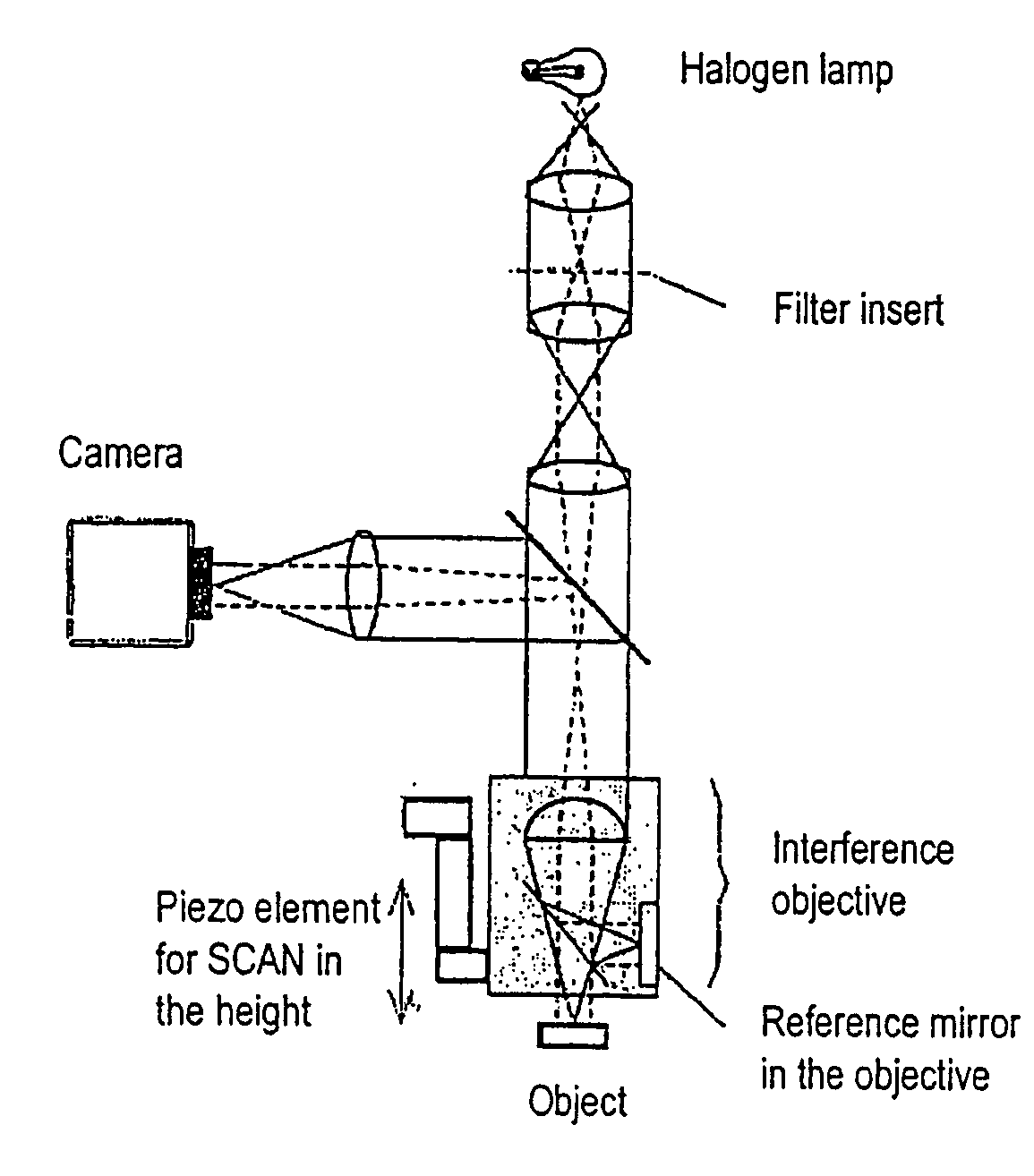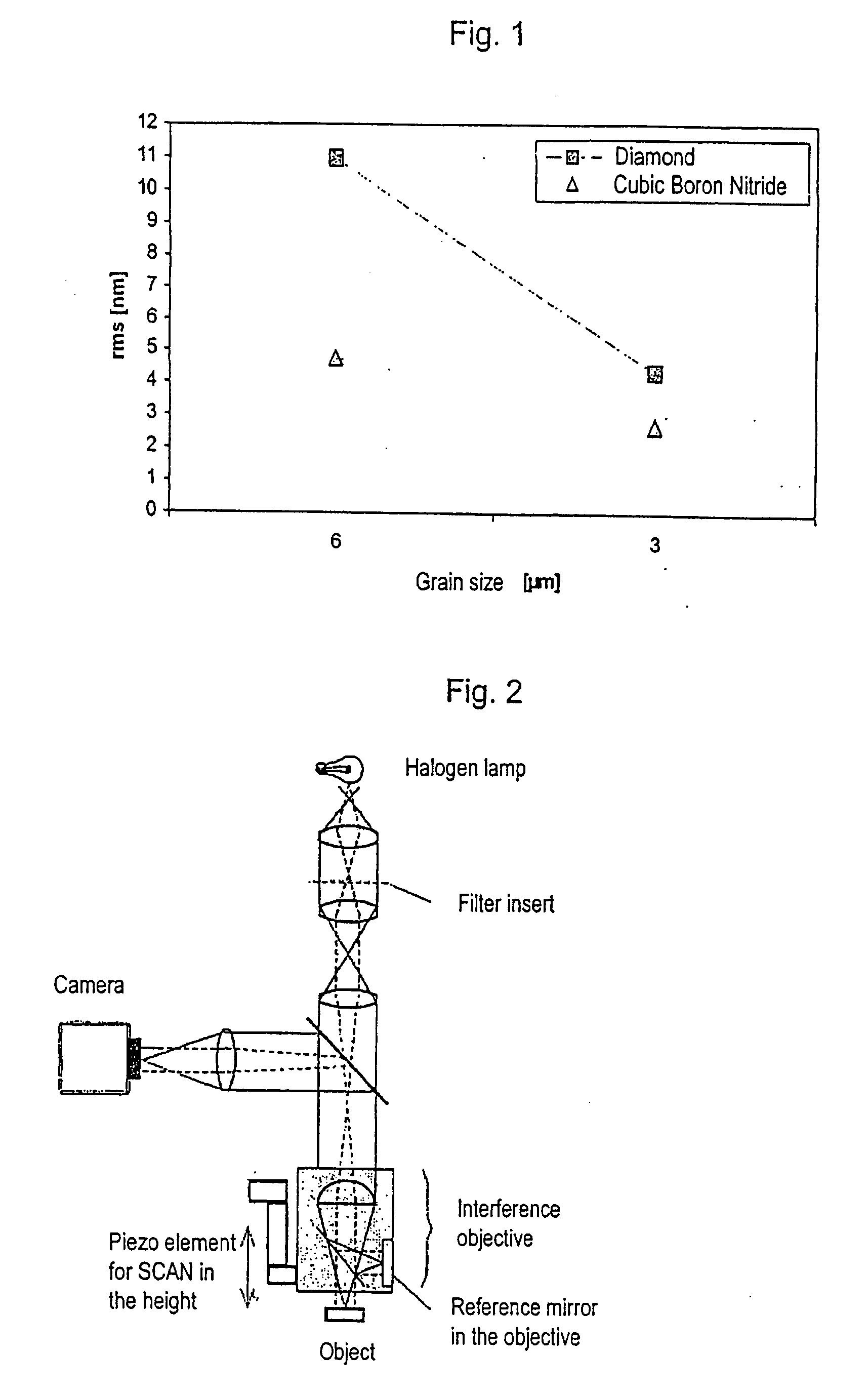Process for smoothening III-N substrates
a technology of iii-n substrates and smoothing processes, applied in the direction of crystal growth process, decorative surface effects, decorative arts, etc., can solve the problems of structural damage in crystals, unsuitable ga-surface, damage to crystal lattices in the surface-near region, etc., to improve the effect of polishing process, improve crystal quality, and improve the effect of the polishing process
- Summary
- Abstract
- Description
- Claims
- Application Information
AI Technical Summary
Benefits of technology
Problems solved by technology
Method used
Image
Examples
example
[0045]As a polishing machine, a PT 350 Premium of the company I-B-S Fertigungs-und Vertriebs-GmbH was used. GaN-wafer having (0001)-orientation had been adhered by means of Thermowax with the N-polar backside on a heated support plate, wherein the latter was cooled again to room temperature until the process started. The polishing cloth, which was a medium hard cloth based on polyurethane (Rohm and Haas SUBA IV) was adhered onto the polishing plate. The cBN-slurry (CBN Slurry W69S1 6 μm / 3 μm HVY, dealer Dieter Manfred Böduel, Wittenberg, Germany) was dropped at a flow rate of ˜5 ml / min. The use of the cBN-slurry was accomplished in two mutually independent polishing steps, using 6 μm and 3 μm sized cBN particles, respectively (mean particle sizes, respectively). Polishing plate and sample were rotated with ˜30 min−1 and ˜20 min−1, respectively. In addition, the sample, fixed out-of-center, oscillated in radial direction. The compression during polishing was ˜1.700 g / cm2.
[0046]The Ga...
PUM
| Property | Measurement | Unit |
|---|---|---|
| mean grain sizes | aaaaa | aaaaa |
| mean grain sizes | aaaaa | aaaaa |
| mean grain sizes | aaaaa | aaaaa |
Abstract
Description
Claims
Application Information
 Login to View More
Login to View More - R&D
- Intellectual Property
- Life Sciences
- Materials
- Tech Scout
- Unparalleled Data Quality
- Higher Quality Content
- 60% Fewer Hallucinations
Browse by: Latest US Patents, China's latest patents, Technical Efficacy Thesaurus, Application Domain, Technology Topic, Popular Technical Reports.
© 2025 PatSnap. All rights reserved.Legal|Privacy policy|Modern Slavery Act Transparency Statement|Sitemap|About US| Contact US: help@patsnap.com


